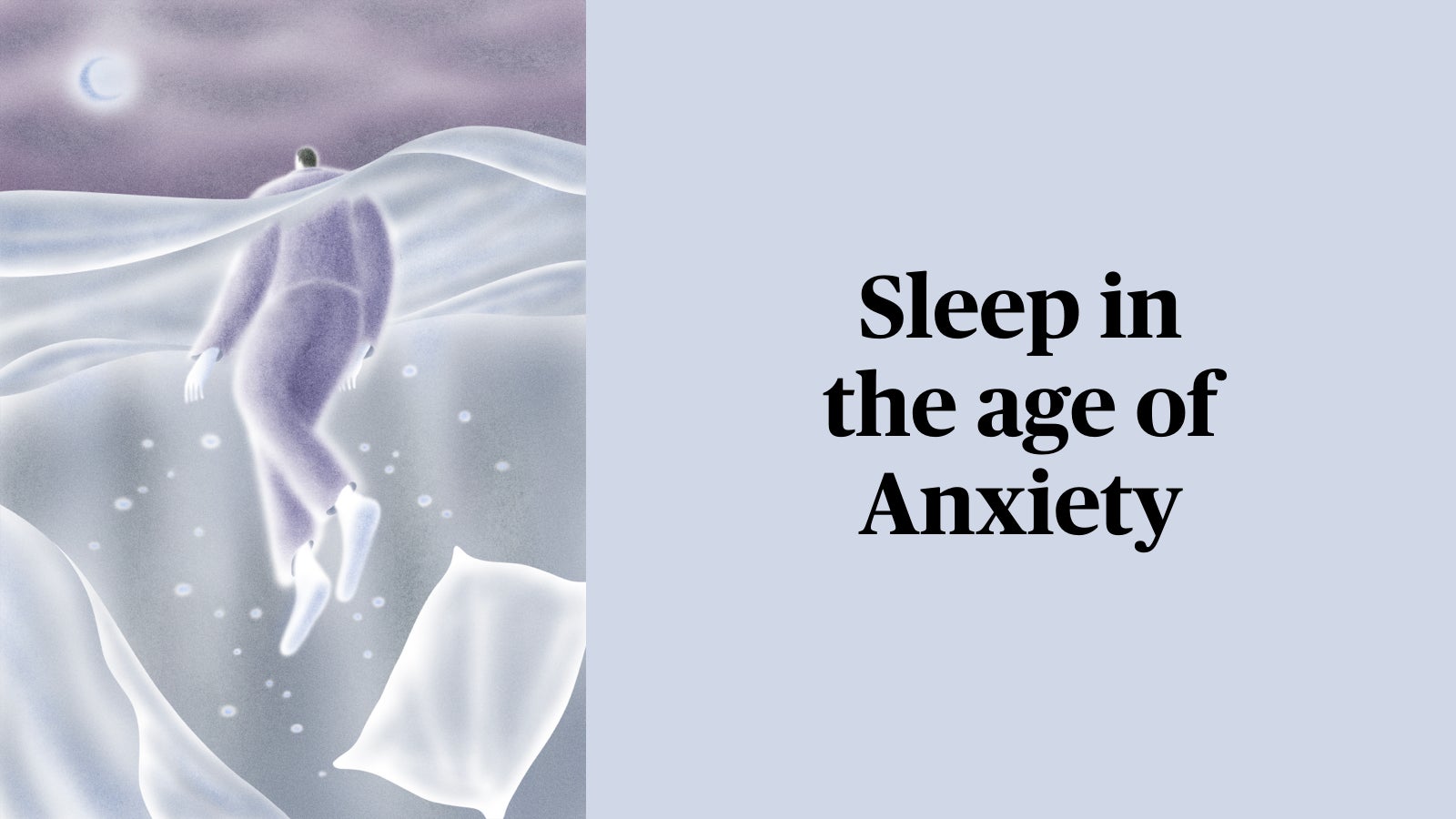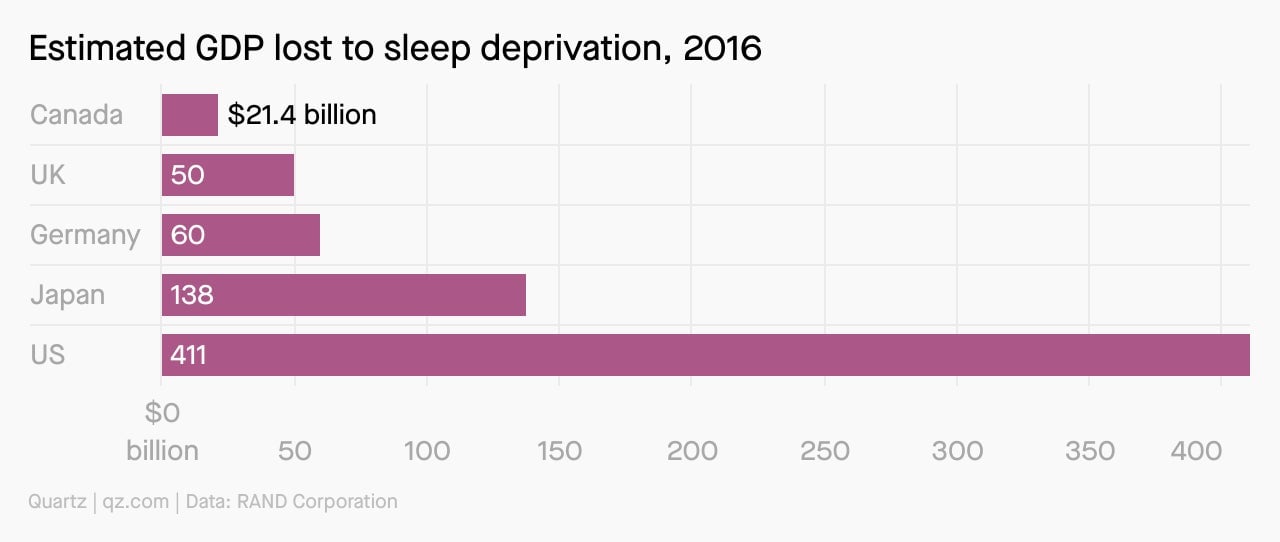For members—Sleep in the age of anxiety
[qz-guide-hero id=”434624989″ title=”💡 The Big Idea” description=”People worldwide are having trouble sleeping. Tech promises to help.”]


[qz-guide-hero id=”434624989″ title=”💡 The Big Idea” description=”People worldwide are having trouble sleeping. Tech promises to help.”]
40%: People in 13 countries who had trouble sleeping during the pandemic, according to a review study
58%: Rise in US google searches for insomnia during the first five months of 2020
35%: Adults who say they got less than seven hours of sleep per night, according to a 2014 (pre-pandemic) CDC study
$8,000: Cost of a King-sized split smart bed from ReST that tracks your sleep and automatically adjusts to changes in pressure
$12.5 billion: Value of the smart sleep market in 2020
$40.6 billion: Anticipated value of the smart sleep market in 2027
Explain it like I’m 5!
So why can’t I sleep, exactly?
There’s never just one reason why people can’t sleep. Among the multitude of factors that have been blamed for our inability to sleep are stress, anxiety, caffeine, the news, alcohol, social media, working too much, not having work to do, and blue light—all of which are, arguably, artifacts of our productivity-obsessed culture. For most people, cutting them out entirely is near impossible because they’re so baked into the way we live.
Sleeplessness was already at what the World Health Organization called “epidemic” levels even before Covid-19, but the pandemic has made those feelings more widespread and intense, which can lead to a condition some health experts have termed “coronasomnia.”
Therapy and medication are the gold standard of treatment for sleeplessness. But in recent years, there’s been an explosion of gadgets and apps promising better sleep through technology.
You’ll want to catch up on your sleep before the Olympics begin on July 23 in Tokyo. If you do doze off and miss a moment or two, the Need to Know: Tokyo Olympics newsletter will catch you up on all that goes into producing, playing, and profiting from the Games.
Charting why economic losses from sleep deprivation
That groggy, I-need-coffee feeling you get after a night of not sleeping enough? There’s a real economic cost to it.
Tech enters the chat
If you’ve ever found yourself frantically scrolling through Google for insomnia hacks at 3am, the appeal of sleep tech is obvious: the promise of instant sleep is impossible to ignore. And while sleep tech will probably never take the place of a trained therapist, there is room for some gadgets, especially those designed by scientists or with scientific principles in mind, to work in tandem with current methods to lead to better sleep.
Sleep gadgets generally fit into two broad categories:
Sleep trackers
What they’re supposed to do: Track metrics associated with sleep and serve them to the user.
Upsides: Some kinds of sleep trackers are pretty good at detecting metrics like heart rate and breathing, movement, time spent sleeping, disturbances throughout the night, and time spent in different stages of sleep.
Downsides: Most people don’t know what to do with the devices’ information
Examples:
📱 Apps
💍 Wearables (Oura ring, FitBit)
👂 Movement and auditory sensors (Amazon’s Alexa-powered Sleeptracker)
🛏️ Smart beds (ReST, Eight Sleep Pod)
Sleep augmenters
What they’re supposed to do: Apps and gadgets that claim to make you fall asleep faster and get a better night’s rest, including optimizing sleeping conditions.
Upsides: Many of them are based on science
Downsides: Most are still too new to be proven effective
Examples:
💡 Customizable lighting (Philips Smartsleep, Casper Glow Light)
🎧 Soothing sounds (white noise machines, playlists, noise-canceling headphones)
💆 Devices that monitor brain activity and guide it towards calm (FocusCalm and Muse headbands)
🤖 Cuddly robots that encourage a person to slow their breathing (Somnox sleep robot)
Watch this
Jane Evans feels great after five hours of sleep each night. Now scientists are studying people like Evans in an effort to help those of us who need more sleep and have trouble getting it.
Fun fact!
The way humans evolved, certain frequencies of light set our circadian rhythms (the body’s 24-hour internal clock that regulates sleep and other processes). We’re used to more blue and green wavelengths in the day, and more red at night.
But the way we live now tends to scramble that natural inclination. Our screens, which we stare at during many of our waking hours, emit blue light, which wakes us up (screen time has been connected to sleep problems). And we never fully get the “quiet down” signal because we don’t go to bed with the sun, instead staying up past dark with our artificial lights.
“We’ve sort of made the night optional,” says Michael Grandner, director of the Sleep and Health Research Program at the University of Arizona. Darkness might be optional, but sleep certainly isn’t.
DIY
Want a quick way to sleep better? In a world where constant stimulation is the norm, being deliberate about carving out peace and quiet is paramount for good sleep.
📵 Keep electronic devices out of the bedroom
🕯️ Have a consistent nighttime routine
🍷 Avoid big meals and alcohol before bed
📣 Sound off
Have you ever used tech to help you sleep?
In last week’s poll about hybrid work, 55% of respondents said working mostly remotely had more upsides than downsides. We love your optimism—maybe you should celebrate with a workday nap?
